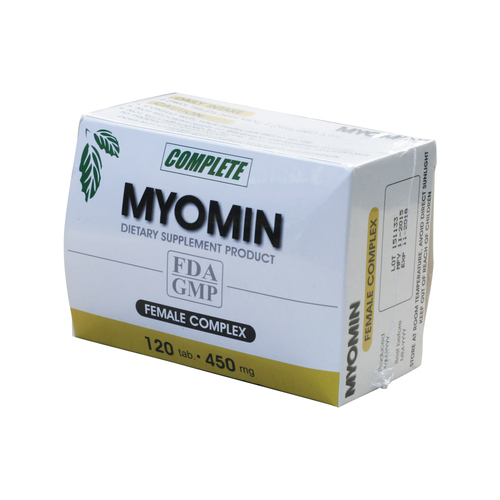Copyright © 2012 - 2021 NaturalniProdukti.com
- Superfoods
- Supplements
- Butter/Oil
- Argan oil
- Almond oil
- Ghiy
- Olive oil
- Apricot oil
- Cocoa butter
- Coconut oil
- Hemp oil
- Linseed oil
- Walnut oil
- Rapeseed oil
- Sunflower oil
- Drinks
- Food
- Grains and Legumes
- Bean
- Lentils
- Rice
- Quinoa
- Buckwheat
- Wheat, spelt, spelled
- Millet, amaranth, rye, chickpeas, bulgur, soybeans
- Seeds, nuts, dried fruit
- Refreshments
- Pasta
- Noodles
- Macaroni
- Cous cous
- Spaghetti, Linguini
- Fusilli, farfalle
- Penne
- Tagliatelle, Pappardelle
- Lasagna, Cannelloni, Gnocchi
- Flour
- Starch
- Soda, yeast, starters
- Salt
- Himalayan salt
- Sea salt
- French Celtic salt
- Potassium vital salt
- Sugar
- White sugar
- Brown sugar
- Coconut sugar
- Sweeteners
- Syrup
- Maple syrup
- Syrup of Elderberry
- Agave syrup
- Cosmetics
- Cosmetics for face
- Face cream
- Anti-acne cosmetic
- Serums and oils for face
- Masks and bran Face
- Cleansing cosmetics for face
- Floral waters
- Cosmetics for eyes
- Cosmetics for lips
- Body cosmetics
- Body lotion
- Body oils
- Forming creams
- Massage oils
- Pregnant and lactating
- For man
- Cosmetics for babies and children
- Deodorants
- Hair cosmetics
- Shampoos
- Conditioners
- Hair masks
- Oils, serums and lotions for hair
- Sets Hair
- Others
- Preparations
- Superfoods
- Supplements
- Butter/Oil
- Argan oil
- Almond oil
- Ghiy
- Olive oil
- Apricot oil
- Cocoa butter
- Coconut oil
- Hemp oil
- Linseed oil
- Walnut oil
- Rapeseed oil
- Sunflower oil
- Mustard oil
- Sesame oil
- Pumpkin oil
- Rosehip oil
- Avocado oil
- Oil Milk Thistle
- Coriander oil
- Poppy seed oil
- Sea buckthorn oil
- Siberian cedar oil
- Black Cumin oil
- Chia seed oil
- And more types of oil
- Drinks
- Food
- Cosmetics
- Others
- Preparations
MYOMIN
COMPLETE ® MYOMIN | MIOMIN 120 tablets in a blister
APPLICATION:
• A complex of active catechins and indoles supporting the normalization of the body's condition in: tumors of estrogen-dependent tissues, in post-operative recurrence of endometrial cysts, in infectious complications after diagnostic curettage and abortion;
• Contributes to the normalization of the state of the body during the growth of the cells of benign and malignant formations through apoptosis of the affected cells and thus prevents the formation of new vessels through which the tumor formations are fed.
• Helps normalize the state of the body in: hormonal imbalance, dysplasia, benign and malignant formations of the uterus, ovaries, breast, dysplasia, fibromyoma, ovarian cysts, mastopathy, endometriosis, premenstrual syndrome, human papilloma virus (HPV), tumor formations of the mammary gland.
RECOMMENDED DAILY INTAKE: 4 TABLETS PER DAY, DURING MEAL
HOW TO USE: 20-DAY CYCLE ALTERATING WITH A 10-DAY BREAK
PACKAGING: 120 TABLETS, FACTORY SEALED BLISTER
THE INGREDIENTS HAVE BEEN FOUND TO BENEFIT THE FOLLOWING CONDITIONS:
Uterine fibroids; Conditions associated with human papillomavirus infection; cervical intraepithelial neoplasia; vulvar intraepithelial neoplasia; recurrent respiratory papillomatosis; systemic lupus erythematosus
REPORTED PROPERTIES OF THE INGREDIENTS:
Uterine fibroids are estimated to be present in 20-40% of women of reproductive age, indicating that they are the most common gynecological neoplasms in the pelvis. The term "fibroma" is really a misnomer because this tumor is largely composed of smooth muscle rather than fibrous tissue, and thus more appropriately called "leiomyoma." Leiomyomas are usually asymptomatic and benign. Women of African descent are 3-9 times more likely to have these tumors. They cannot be identified before puberty and usually grow only during the reproductive years, sometimes reaching significant proportions that may lead to symptoms of increased pressure on the tau structures. Additional symptoms may include abnormal endometrial bleeding, infertility, and miscarriage. Fibroids, when present, are usually multiple and can reach enormous sizes, weighing about 100 pounds. Malignant transformation is a rare phenomenon, accounting for less than 5% of tumors; however, excessive bleeding is common and often leads to hysterectomy when there is severe blood loss.
The cause of uterine fibroids is unknown, but research shows that estrogen receptors are found in higher concentrations than the surrounding myometrium. Estrogen therapy is also known to cause a sudden increase in their size. Conversely, low estrogen levels, such as those seen in menopause, will often cause them to disappear. Although there is no definitive evidence that estrogen causes leiomyomas, this hormone is certainly involved in fibroid growth, and this information provides a rationale for effective treatment.
CLASSIFICATION OF FIBROIDS
Leiomyomas are usually multifocal, discrete and spherical, with clear demarcation from surrounding tissue. They consist of varying amounts of smooth muscle and fibrous connective tissue.
Fibroids originate in the myometrium, the muscular part of the uterus, and are classified according to their anatomical location.
Subserosal fibroids are found on the outside of the uterus and are usually pedunculated, meaning they are attached by a stalk-like projection. Intramural fibroids grow in the wall of the uterus, giving the uterus a variable shape. Finally, submucosal leiomyomas are located just below the endometrium and can bulge into the lumen, or uterine cavity, as they grow. Sometimes, a submucosal tumor will become pedunculated and protrude partially through the cervix to create a "pedunculated vaginal fibroid."
About 35-50% of women with fibroids will experience symptoms that match their size and location. However, even very large masses may not cause any complaints, while a small fibroid in the "wrong" place can be debilitating.
1. Infertility: About 2-10% of fibroid patients will experience an inability to conceive. The cause of infertility is thought to be abnormal motility of the tubes or uterus, interference with sperm movement, or abnormal bleeding.
2. Pressure effects: Depending on their location, leiomyomas can compress or obstruct several structures. The most common complaints are the need to urinate and increased frequency due to pressure on the bladder. With very large tumors, patients may experience constipation and edema of the lower extremities due to congestion of the pelvic veins.
3. Abnormal endometrial bleeding: Abnormal uterine bleeding is the most common symptom associated with fibroids and is present in about 30% of patients. Women suffering from fibroids will have characteristically heavy, prolonged menstrual bleeding (menorrhagia). Premenstrual spotting is common, as is light discharge after menstruation. Additionally, some women will have varying degrees of metrorrhagia (intermenstrual bleeding). In severe cases, these abnormalities in the menstrual cycle can lead to chronic blood loss with iron-deficiency anemia or even hypovolemia. These conditions can be life-threatening and require aggressive medical intervention if left untreated.
4. Pain: Pain is not a typical symptom attributed to leiomyoma. When it occurs, it is usually due to degeneration within the tumor following circulatory occlusion, infections, or torsion of a pedunculated fibroma. Sometimes, the tumor will compress the nerves to the pelvic bones and cause pain to radiate.
INDOLE-3-CARBINOL (I3C)
Indole-3-carbinol (I3C) is a compound found in high concentrations in vegetables of the Brassica family, including broccoli, cauliflower, Brussels sprouts, and cabbage. As a dietary supplement, I3C has received attention in recent years as a promising preventive and treatment agent for breast and other cancers, and may have beneficial effects in the management of herpes simplex virus (HSV) and human papillomavirus. (HPV).
Metabolism and Bioavailability
A number of commonly eaten cruciferous vegetables, including broccoli, Brussels sprouts and cabbage, are good sources of glucobrassicin, the glucosinolate precursor of I3C. Myrosinase, an enzyme that catalyzes the hydrolysis of glucosinolates, is physically separated from glucosinolates in intact plant cells. When plant cells are damaged, as when cruciferous vegetables are cut or chewed, the interaction of myrosinase and glucobrassicin leads to the formation of I3C. In the acidic environment of the stomach, I3C molecules can combine with each other to form a complex mixture of biologically active compounds known as acid condensation products. Although numerous acid condensation products of I3C have been identified, some of the best known include dimer 3,3'-diindolylmethane (DIM) and cyclic trimer (CT). The biological properties of individual acid condensation products differ from those of I3C and are responsible for the biological effects inherent to I3C. When the plant myrosinase is inactivated (eg by cooking), glucosinolate hydrolysis still occurs to a lesser extent, due to the action of the myrosinase of human intestinal bacteria. Thus, when cruciferous vegetables are cooked in a manner that inactivates myrosinase, glucobrassicin hydrolysis by gut bacteria still occurs in some I3C formations. However, acid condensation products are less likely to form in the more alkaline environment of the gut.
BIOLOGICAL ACTIVITIES
Effects on biotransformation enzymes involved in carcinogenic metabolism. Biotransformation enzymes play a major role in the metabolism and elimination of many biologically active compounds, including steroid hormones, carcinogens, toxins, and drugs. In general, phase I biotransformation enzymes, including the cytochrome P450 (CYP) family, catalyze reactions that increase the reactivity of hydrophobic (fat-soluble) compounds, which prepares them for reactions catalyzed by phase II biotransformation enzymes. Reactions catalyzed by phase II enzymes increase water solubility and promote the removal of these compounds.
Acid condensation products of I3C, especially DIM and indole [3,2-B]carbazole (IC3), can bind to proteins in the cytoplasm of cells called the aryl hydrocarbon receptor (ABP). Binding allows AHR to enter the nucleus, where it forms a complex with the Ahr nuclear translocator (Arnt) protein. This Ahr/Arnt complex binds to specific DNA sequences of genes known as xenobiotic expression elements (XRE) and enhances their transcription. Genes for multiple CYP enzymes and several phase II enzymes are known to contain XREs. Thus, oral intake of I3C leads to the formation of acid condensation products that can increase the activity of certain phase I and phase II enzymes. Increasing the activity of biotransformation enzymes is generally considered a beneficial effect because the elimination of potential carcinogens or toxins is enhanced. However, the potential for adverse reactions exists because some procarcinogens require phase I biotransformation enzymes to become active carcinogens.
Changes in Estrogen Activity and Metabolism
Endogenous estrogens, including 17beta-estradiol, exert estrogenic effects by binding to estrogen receptors (ERs). Inside the nucleus, the estrogen-ER complex can bind to DNA sequences in genes known as estrogen response elements (EREs), recruiting coactivating molecules and thereby stimulating the transcription of estrogen-responsive genes. Some ER-mediated effects, such as those that stimulate cell proliferation in the breast and uterus, may increase the risk of developing estrogen-sensitive cancers.
Effects on estrogen receptor activity
When added to breast cancer cells in culture, I3C was found to inhibit the transcription of estrogen-responsive genes stimulated by 17beta-estradiol. Acid condensation products of I3C that bind to and activate Ahr may also inhibit the transcription of estrogen-responsive genes by competing for coactivators or uvel?
COMPOSITION:
POLYPHENOLS AND GALACATECHINS, INDOLE-3-CARBINOL
QUANTITATIVE CONTENT OF THE ACTIVE INGREDIENTS IN ONE TABLET:
Broccoli extract-Indole-3-Carbinol (Broccoli extract-Indole-3-Carbinol) 100 mg;
Green Tea Leaf extract, Total Polyphenols: Epigallocatechin - 3-gallate (Epigallocatechin 3-gallate-EGCG) 62mg, Epicatechin gallate (ECG) 17mg, Epigallocatechin (Epigallocatechin - EGC) 13 mg, Epicatechin (Epicatechin-EC) 9.7 mg, Gallocatechin gallate (Gallocatechin gallate - GCG) 7.4 mg.
EXCIPIENTS: Microcrystalline cellulose 139mg, Partially pregelatinized corn starch 12.5mg, Sodium starch glycolate 7.5mg, Dicalcium phosphate hydrate 35mg, Hydrated magnesium silicate 3mg, Magnesium stearate 3mg.- Related products
- Similar products
- Fish oil (Omega 3) + Vitamin E3.78 EUR
- Poly Plant Omega 3694.39 EUR
- Moringa Extra12.83 EUR
- Lyolact ®- probiotic9.28 EUR
- Comments
- Myo Min January 2, 2023 4:50 PM
- Benedict Cece May 12, 2023 2:44 AMWill myomin help shrink my prostate
- NaturalniProdukti.com May 12, 2023 10:02 PMHello, this supplement is for women.
- Nicola Wray August 3, 2023 3:22 PMHello, does Myomin always shrink fibroids, even very large ones? Many thanks, Nicola.
- NaturalniProdukti.com August 3, 2023 11:08 PMHello, you have a reply to the email you provided.
- Marija Lokin August 31, 2023 11:25 AM
- Product comments
- Newsletter







